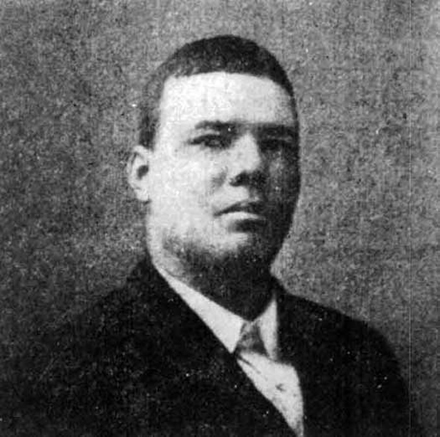
Tom Turpin
Tom Turpin was a musician and businessman whose bar in St. Louis became an important gathering place for ragtime musicians, including Scott Joplin. Turpin was born in Savannah, Georgia, and moved with his family to St. Louis in the early 1880s. Turpin’s father ran a saloon and was active in local politics. Together with his brother Charles, Turpin traveled west and invested in a Nevada gold mine. When this venture proved to be unsuccessful, Turpin returned to St. Louis and opened the Rosebud Bar at 2220 Market Street. This saloon became a focal point for the ragtime music scene.
Tom Turpin’s own musical output was small compared to that of other ragtime composers. He did, however, have a strong influence on the development of ragtime. In fact, his composition “The Harlem Rag” (1897) is considered the first published rag by an African American. His other compositions include “The Harlem Rag” (1897), “The Bowery Buck” (1899), “A Ragtime Nightmare” (1900), “St. Louis Rag” (1903), “The Buffalo Rag” (1904), and “Pan-Am Rag” (1914). Turpin died on August 13, 1922, and is buried in St. Peter’s Cemetery in St. Louis, Missouri.
Text by Carlynn Trout with research assistance by Todd Barnett
References and Resources
For more information about Tom Turpin’s life and career, see the following resources:
Society Resources
The following is a selected list of books, articles, and manuscripts about Tom Turpin in the research centers of The State Historical Society of Missouri. The Society’s call numbers follow the citations in brackets.
Articles from the Newspaper Collection
- “Mr. Tom Turpin: A Rosebud Novelty.” Saint Louis Palladium. November 27, 1904, p. 1. [Reel # 41732]
- “The Rosebud Ball.” Saint Louis Palladium. February 27, 1904, p. 1. [Reel # 41731]
Books and Articles
- Blesh, Rudi. Classic Piano Rags: Complete Original Music for 81 Rags. New York: Dover Publications, Inc., 1973. pp. 322-346. [REF 781.52 B617]
- Blesh, Rudi, and Harriet Janis. They All Played Ragtime: The True Story of an American Music. New York: Oak Publications, 1971. pp. 6, 23, 40-76, 101-121, 146-169, 231-264. [REF F565.3 B617 1971]
- Cotter, John Cleophus. The Negro in Music in Saint Louis. St. Louis: Washington University, 1959. pp. 295-304. [REF H235.71 C828]
- Jasen, David A., and Trebor Jay Tichenor. Rags and Ragtime: A Musical History. New York: Seabury Press, 1978. pp. 19-34, 60, 102-115, 183-186. [REF 781.572 J453]
- Schafer, William J., and Johannes Riedel. The Art of Ragtime: Form and Meaning of an Original Black American Art. Baton Rouge: Louisiana State University Press, 1973. pp. 8, 14, 29, 47, 52, 90-117, 178, 217. [REF 781.572 Sch14]
- Southern, Eileen. The Music of Black Americans. New York: W. W. Norton & Co., Inc., 1971. pp. 318-332. [REF 780 So88]
- Waldo, Terry. This is Ragtime. New York: Hawthorn Books, Inc., 1976. pp. 35-40, 50, 90. [REF 781.572 W147]
Oral History
- Jazzman Oral History Project
In this interview transcript from the Jazzman Oral History Project at St. Louis, E. A. McKinney recalls his relationship with Tom Turpin and other St. Louis ragtime players.
Outside Resources
- “Perfessor” Bill Edwards
This website is full of information about Tom Turpin and other ragtime musicians. - Library of Congress National Jukebox
Audio files of Turpin’s songs, “The Buffalo Rag” and “St. Louis Rag,” can be found here.

